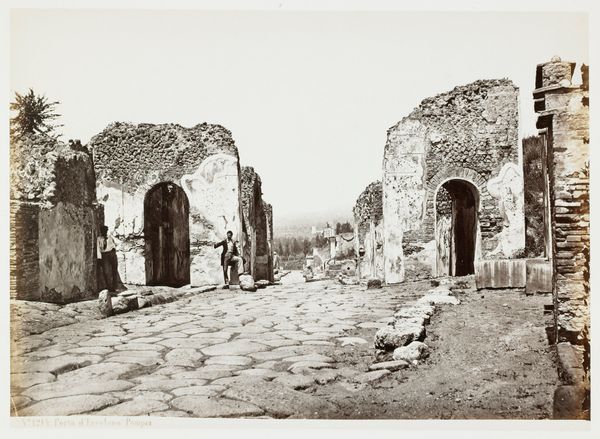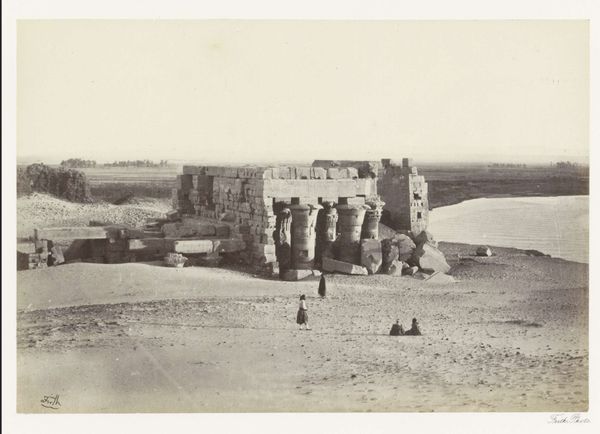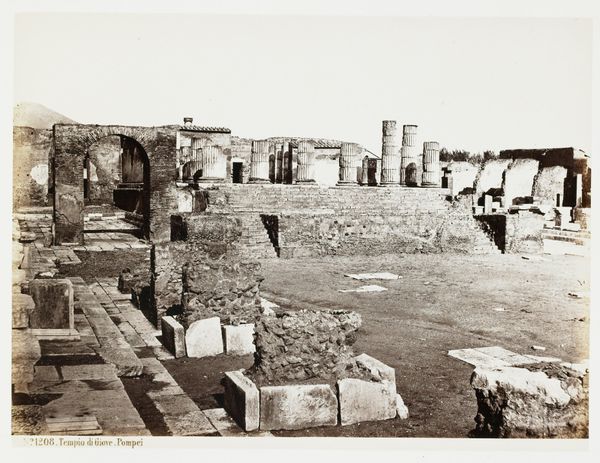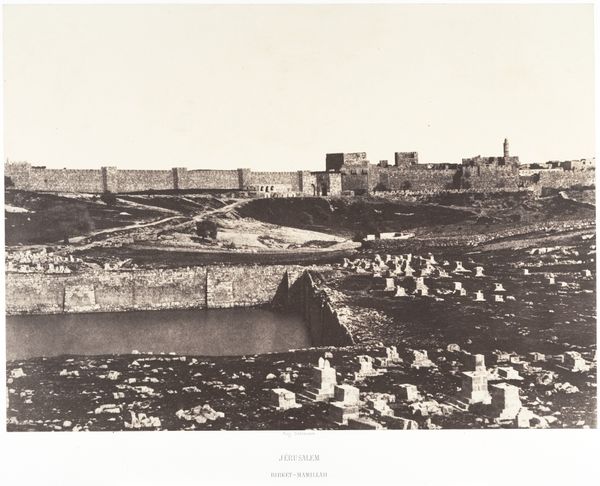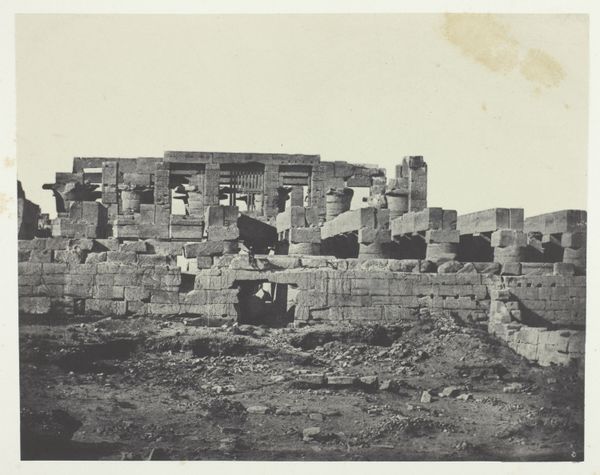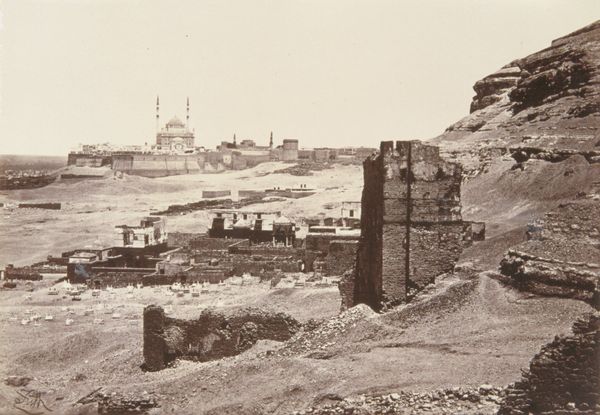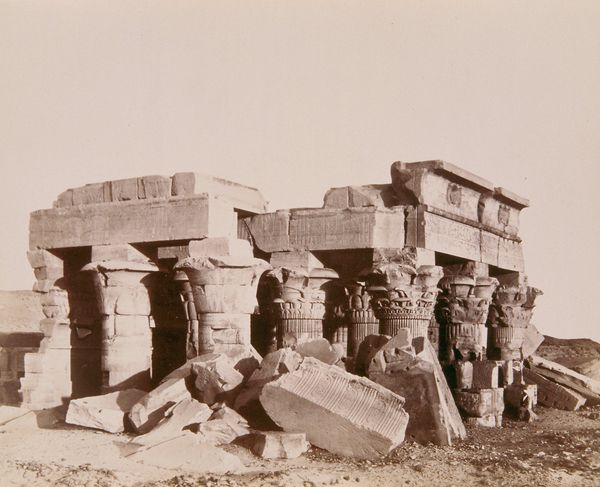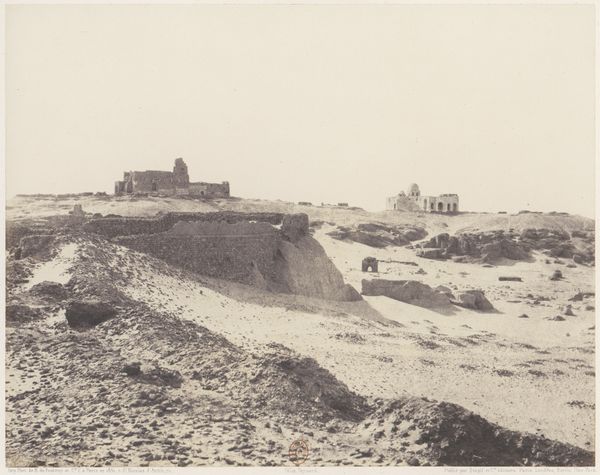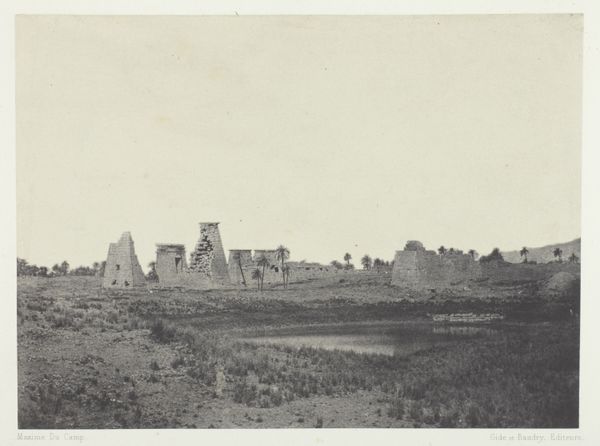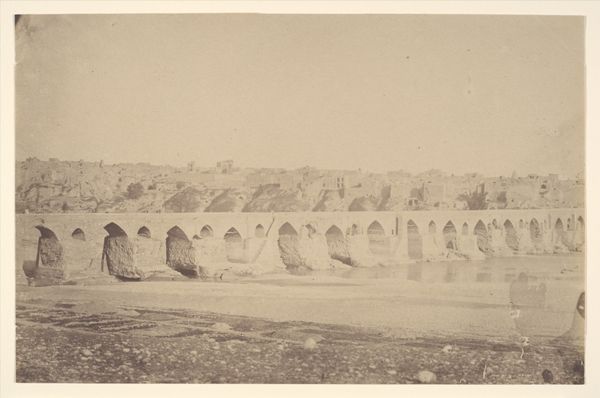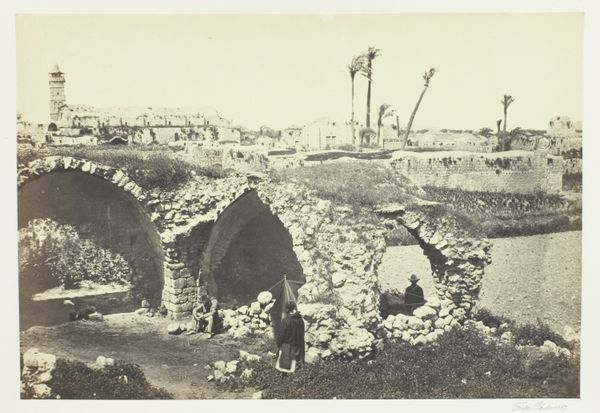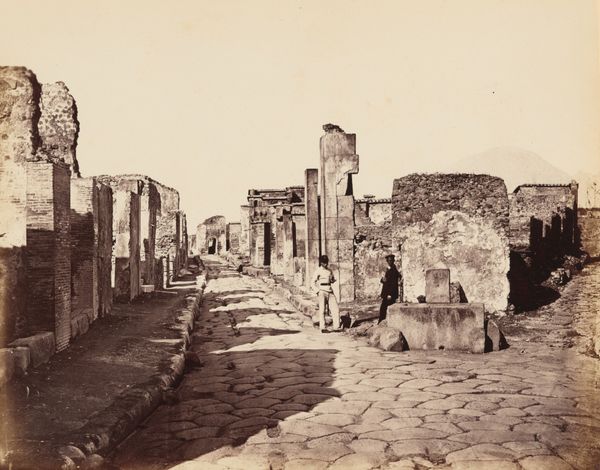
albumen-print, photography, albumen-print
#
albumen-print
#
landscape
#
ancient-egyptian-art
#
photography
#
landscape photography
#
ancient-mediterranean
#
albumen-print
Dimensions: 8 7/16 x 11 in. (21.43 x 27.94 cm) (image)11 x 14 in. (27.94 x 35.56 cm) (mount)
Copyright: Public Domain
Curator: Here we have an albumen print, attributed to Antonio Beato, dating back to the 19th century. It's simply titled "Untitled", currently held in the collection of the Minneapolis Institute of Art. Editor: The sepia tones immediately give it a feeling of age and distance. There's a desolate grandeur to the scene—ruins reflected in still water, figures dwarfed by monumental structures. It speaks volumes about the passage of time and the power of history etched in stone, really drawing one's focus toward the materiality of stone itself. Curator: Indeed. Beato was known for his photographic documentation of Egypt, among other places. The photograph provides insight into the 19th century European fascination with Egypt. This image reflects both scientific observation and a constructed Orientalist perspective. Editor: What strikes me, though, is how the process of albumen printing itself impacts our interpretation. It was painstaking labor intensive and offered a fairly durable, if often faded, final product, influencing the work, it's tones, and even preservation over time. What are we actually looking at then? Ancient ruins or evidence of Victorian Era craftmanship? Curator: An interesting question. I think we have to look at Beato's context. These photographic expeditions were supported by colonial structures, shaping both access and the narrative. Photography like this played a role in shaping Western understanding and control, by picturing the places, creating this colonial idea. Editor: But isn't the very act of photographing also a material intervention? The photographer chooses the viewpoint, controls the exposure, selects what to show and not show. Beato’s hand is as present as any ancient artisan. Curator: Perhaps, though understanding the societal conditions provides context, enriching and problematizing how we analyze Beato's photograph. We aren't simply looking at stone; we see these ruins through the lens of the photographer, filtered through the era, as consumers looking at colonialism in progress. Editor: In that regard, considering it is an artifact from a different time makes me think. These ruins are still being materially changed – eroding due to environment and the increasing impact of human interaction. Makes you think about the life cycles of objects and materials. Curator: Precisely. Understanding the social context informs how we interpret Beato's choice to depict this subject this way, inviting us to question the dynamics between the photographer, the photographed, and us as the viewers in present time. Editor: Seeing something like this urges one to think through preservation – physically conserving an ancient thing through a technologically advanced new thing… but maybe one could also conserve the human or natural interaction, with its material presence always evolving with the landscape.
Comments
No comments
Be the first to comment and join the conversation on the ultimate creative platform.
